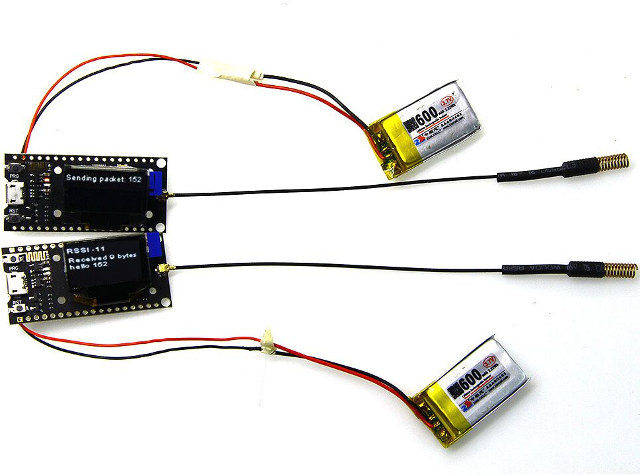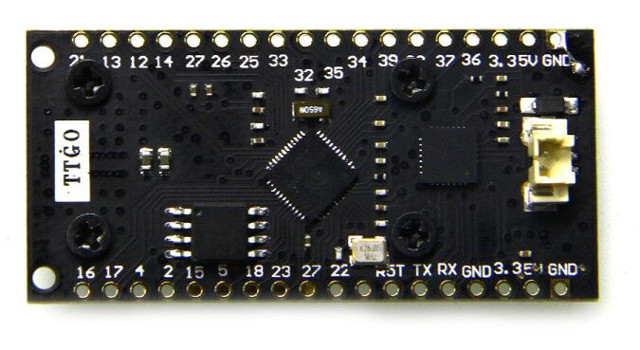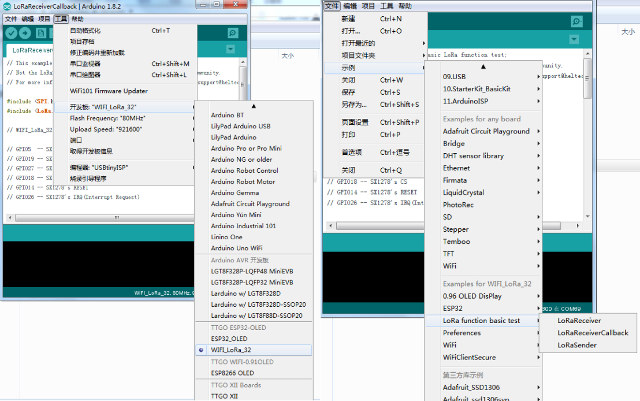Just one year ago, it would cost around $15 to $20+ to get an ESP32 board, that is if you were lucky/fast enough to order one one before it went out of stock. Since then, availability is no longer an issue, and you now can get an ESP32 development board for as low as about $7, or even around $4 during promotions.
Today, I was made aware of another board sold under the “TTGO” brand, that includes not only ESP32 WiFi and Bluetooth SoC, but also a (433 MHz) LoRa radio, and an OLED display. Price? Just $10 plus shipping ($1.75 here).

TTGO ESP32/LoRa board specifications:
- WiSoC – Espressif ESP32
- Storage – 32MB on-board flash (or maybe just 16MB?)
- LoRa
- Semtech SX1278 with u.FL connector + 433MHz antenna (N.B.: Antenna must be connected during use or the Semtech chip could be damaged)
- Sensitivity” ~ -148dBm; output power: +20dBm
- Display – 0.96″ blue OLED display
- USB – 1x micro USB port for debugging (CP2102) and power
- Expansion – 2x 18-pin headers with GPIOs, UART, ADC, Touch, SPI, power signals… (See pinout diagram)
- Misc – Charging Status LED
- Power Supply – 5V via micro USB port, 2-pin battery header, 5V Pin. (Operating voltage: 3.3V to 7V)
 The board can be programmed with the Arduino IDE after downloading and installing the TTGO folder in arduino/hardware. After selecting “WiFi_LoRa_32” board, you should be able to load various samples to play with the board.
The board can be programmed with the Arduino IDE after downloading and installing the TTGO folder in arduino/hardware. After selecting “WiFi_LoRa_32” board, you should be able to load various samples to play with the board.

The board is sold with a 433MHz antenna, and two male headers. You’ll save a little bit on shipping if you purchase two kits instead. The board can also be found on eBay and Banggood.
Thanks to Mpampis for the tip.

Jean-Luc started CNX Software in 2010 as a part-time endeavor, before quitting his job as a software engineering manager, and starting to write daily news, and reviews full time later in 2011.
Support CNX Software! Donate via cryptocurrencies, become a Patron on Patreon, or purchase goods on Amazon or Aliexpress




